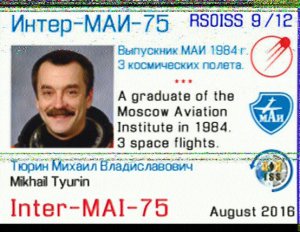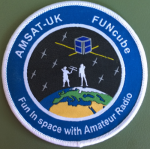1240-1300 MHz band discussed by CEPT WGFM and CPG/PTA
 WRC-2000 saw the Galileo Global Navigation Satellite System (GNSS) get an allocation at 1260-1300 MHz. This was the same ITU conference that saw 432-438 MHz being allocated for satellites that carry Synthetic-Aperture Radar (SAR) systems.
WRC-2000 saw the Galileo Global Navigation Satellite System (GNSS) get an allocation at 1260-1300 MHz. This was the same ITU conference that saw 432-438 MHz being allocated for satellites that carry Synthetic-Aperture Radar (SAR) systems.
In January 2006 Peter Blair G3LTF published a paper Potential Interference To Galileo From 23cm Band Operations. This described the proposed Galileo system design and its applications with particular reference to the E6 (1260-1300 MHz) band. It described the operation of typical Galileo receivers and their ability to deal with interference and gave practical illustrations of these effects.
The 30-satellite Galileo system (24 operational and 6 active spares) is expected to be completed by 2020.
A paper at the CEPT WGFM meeting #93 held in Rome, February 4-8, 2019, titled Coexistence between AS [Amateur Services] and RNSS in the Frequency Range 1260-1300 MHz said:
At the most recent meeting of CPG/PTA #5 in September 2018 the European Commission provided a proposal for Agenda Item 10 of WRC-19 on the amateur service allocation in L band. The EC contribution (CPG/PTA(18)080) proposed to consider an extension of the spectrum allocation to the amateur service on a secondary basis in the range 1300 – 1350 MHz. Germany announced at that meeting that a measurement campaign was already planned to investigate further the coexistence of applications in the amateur service and the radionavigation-satellite service [RNSS] particularly in the frequency range 1260 – 1300 MHz.
Since then these measurements were carried out at the premises of the “Universität der Bundeswehr München” (University of Federal Armed Forces Munich) mid December 2018 and a report on the issue is in preparation. At CPG/PTA #5 the meeting agreed to wait for the results of the measurement before taking any further action. Currently the measurement data is being processed and the results will be reported to CPG/PTA #6 in April 2019. Germany would offer to present this report also to WG FM.
Depending on the results the issue could become an enforcement issue for CEPT and, hence, may become a topic for further consideration in WG FM and WG SE.
WGFM Meeting #93 Paper: Coexistence between Amateur Services and RNSS (Galileo) in the Frequency Range 1260-1300 MHz
https://cept.org/Documents/wg-fm/49268/fm-19-069_information-on-measurement-campaign-on-as-gnss-in-1260-1300-mhz-germany
The CPG/PTA meeting #6 held in Bucharest April 1-5, 2019, saw this proposal:
PTA is asked to consider the results of these tests to determine if appropriate actions are required.
A possible action could be to propose a new Agenda Item for WRC-23 to address the issue. The subject could be: to consider the possible additional spectrum allocation to the amateur service on a secondary basis above 1300 MHz (or in another frequency band to be determined), with a view to progressively migrate the radio amateurs services from the band 1240-1300 MHz to the new band. To study an ITU recommendation for the coexistence of services in the band 1240-1300 MHz in the short/medium term.
CPG/PTA meeting #6 paper: PTA(19)061 EC-JRC_Compatibility between amateur and Galileo
https://cept.org/ecc/groups/ecc/cpg/cpg-pt-a/client/meeting-documents/?flid=9504
WRC-19 Conference Preparatory Group meeting documents
https://cept.org/ecc/groups/ecc/cpg/client/meeting-documents/
2015 European Commission Joint Research Centre report Compatibility between Amateur Radio Services and Galileo in the 1260-1300 MHz Radio Frequency Band – download PDF here
January 2006 – Potential Interference To Galileo From 23cm Band Operations
http://www.southgatearc.org/articles/galileo.htm
m5aka
AMSAT-UK
Powered by WPeMatico









